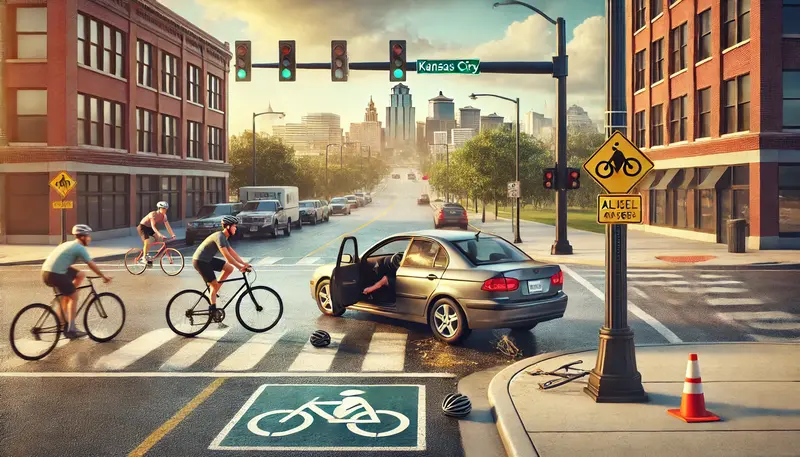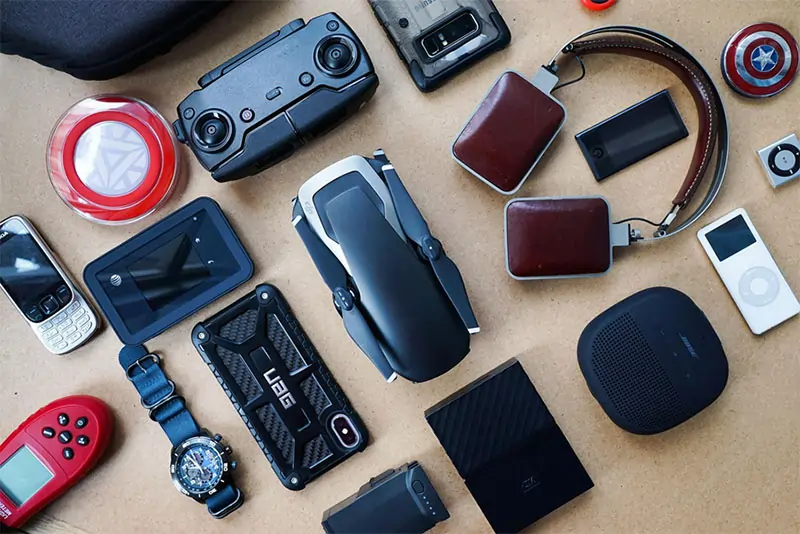Top Causes of Bicycle Accidents in Kansas City and How to Avoid Them
Bicyclists in Kansas City can improve their health condition and reduce pollution. However, traveling on the roads shared with heavy motor vehicles exposes them to great hazards. It has become crucial that every cyclist remains aware of causes of bicycle-related accidents in Kansas City and how not to get on the wrong end of these unfortunate events. Hence, this chapter will discuss a few of the common causes, including distracted driving as well as unfavourable infrastructure, along with a few preventive guidelines.
Common Causes of Bicycle Accidents
1. Distracted Driving – Cyclists are more vulnerable to careless and inattentive automobile drivers who use their mobile phones, consult their GPS devices, or engage in other in-car distractions.
2. Failure to Yield – Many bicycle crashes occur as the result of drivers failing to yield the right of way at an intersection, in a crosswalk, or in lane changes. The danger inherent in these scenarios can increase when motorists either underestimate or altogether miss a bicyclist’s speed.
3. Dooring Incidents – A cyclist riding parallel to parked vehicles is exposed to the risk of dooring, when a driver or passenger opens the door of the car in the path of the cyclist. The accident occurs frequently in congested urban areas.
4. Unsafe Road Conditions – There are several parts of Kansas City that have bad road conditions. There are potholes, debris, and bad roads that could make cyclists lose control or swerve into traffic to avoid these obstacles.
5. Nighttime Riding Without Proper Lighting – Missing front and rear lights and reflective device Inadequate lighting makes it difficult for drivers to identify bicyclists, hence exposing them to the risk of experiencing accidents.
6. Speeding Drivers – Usually, speed reduces the response time of a driver, and thus, bicyclists are not easily avoided, especially during periods of high pedestrian and bicycle traffic areas.
7. Cyclist Errors – Although motorists are most often to blame, cyclists themselves can precipitate accidents by disregarding traffic rules, riding against traffic flow, or failing to use hand signals.
Tips to Avoid Bicycle Accidents
1. Stay Visible
- Use front and rear lights, even during the day, to increase visibility.
- Wear bright or reflective clothing to ensure you stand out, particularly in low-light conditions.
2. Follow Traffic Laws
- Obey all traffic signals and signs. One should regard a stop sign and red light the same as a motor vehicle would.
- Traveling with the same traffic flow minimizes confusion and lowers the likelihood of head-on crashes.
3. Be Cautious at Intersections
- Approach intersections with extra vigilance. Make eye contact with drivers to confirm they see you.
- Use hand signals to indicate turns or lane changes.
4. Avoid the Door Zone
- Keep at least three feet away from parked cars when riding to avoid the danger of being doored.
- Be mindful of activity behind the wheels in parked cars – such as an illuminated brake light or movement behind a window indicating someone is reaching for a door handle.
5. Inspect Your Route
- Plan your route to avoid poorly maintained roads or areas with heavy traffic.
- If possible, use bike lanes or designated cycling paths.
6. Equip Your Bike Properly
- Make sure your bicycle has working brakes, a bell, and lights.
- Check your tires and gears regularly for abrasion to avoid mechanical failure.
7. Stay Alert
- Don’t distract yourself with the use of a phone or listening to music while riding.
- Always observe the surroundings and environment, cars, pedestrians, road conditions, and so on.
8. Advocate for Safer Streets
- Engage with local cycling organizations to promote improved bike lanes and better road maintenance.
- Report hazardous road conditions to local authorities to help improve infrastructure.
Steps to Take After a Bicycle Accident
Even with precautionary measures, accidents can still occur. Knowing what to do in the aftermath can protect your rights and improve your chances of receiving compensation:
1. Seek Medical Attention: Prioritize your health, even if injuries seem minor. Adrenaline can mask symptoms of serious injuries.
2. Document the Scene: Take photos of your injuries, the accident scene, and any damage to your bicycle.
3. Collect Information: Obtain the contact details of the involved driver(s) and any witnesses.
4. File a Police Report: A formal report can serve as vital evidence in any legal or insurance claims.
5. Consult a Bicycle Accident Lawyer: Speak with a Kansas City bicycle accident lawyer to understand your legal options and ensure your rights are upheld.
Most of the bicycle accidents that occur in Kansas City can be prevented if appropriate precautions and awareness are observed. There is generally an understanding of what causes such accidents, and the cyclists can act to prevent the causes, hence reducing the risks of injury after an accident, and it also requires prompt action and appropriate behavior after an accident. A knowledgeable Kansas City bicycle accident attorney will be able to get you the compensation and justice you deserve. Be safe, be alert, and enjoy all the advantages of cycling with confidence.



